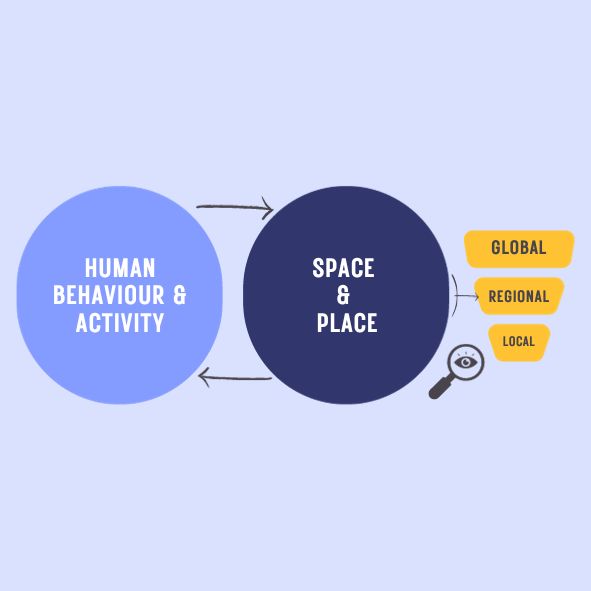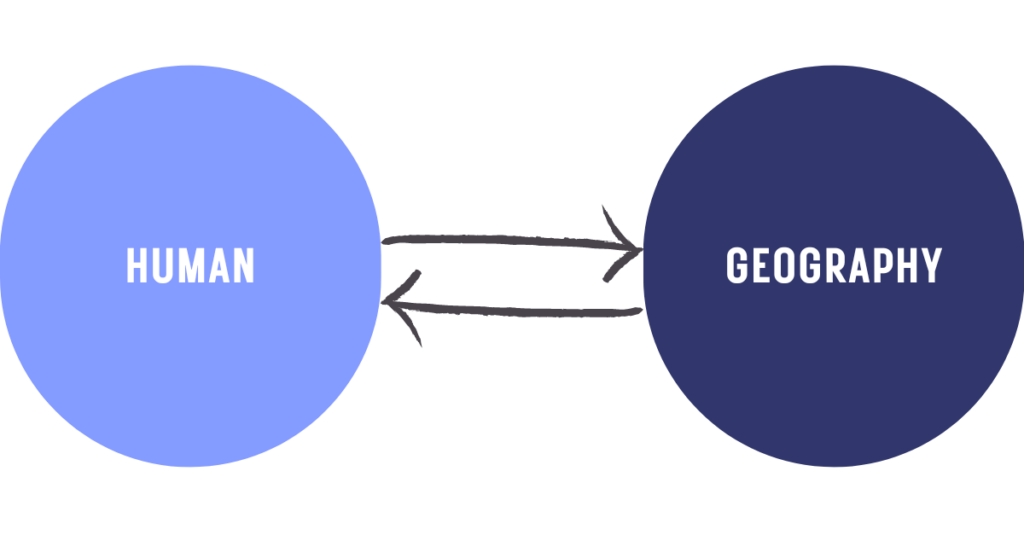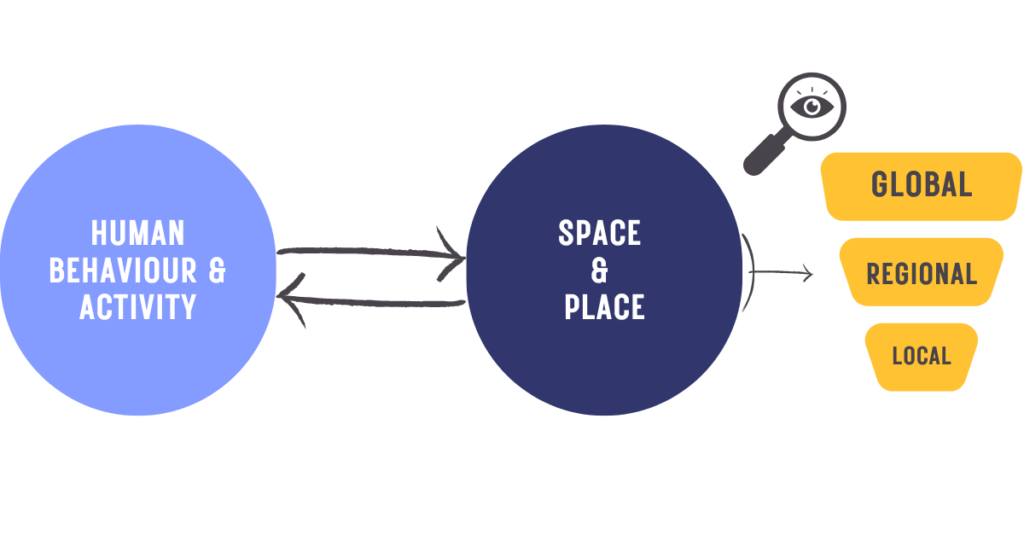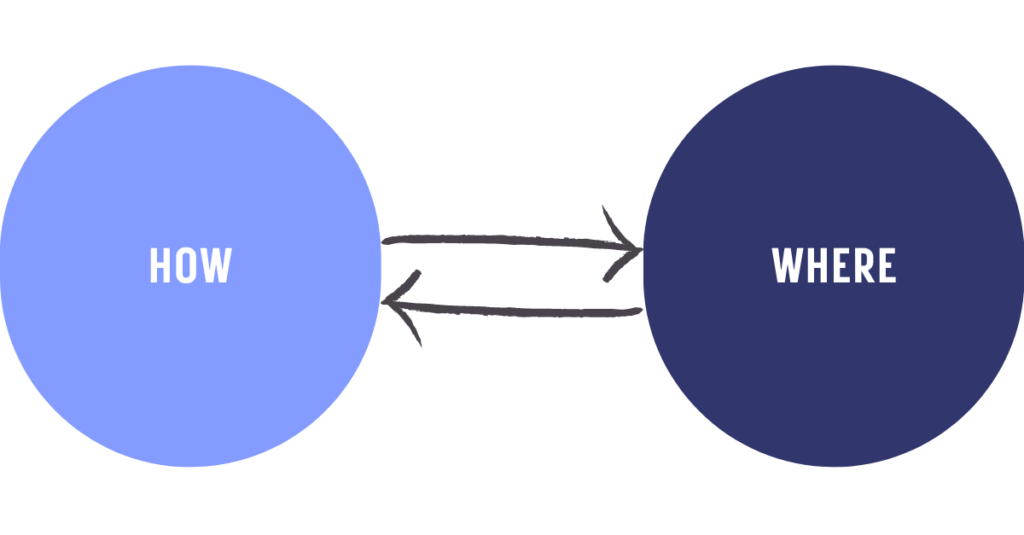
An Introduction to Human Geography
Hello and welcome to the second edition of The Human Geography of Work, a bi-weekly newsletter that explores the spatial and sociocultural dimensions of work and place. I felt it prudent that we start our journey together with a detailed introduction to human geography as a discipline, as you may be wondering what it is […]
Hello and welcome to the second edition of The Human Geography of Work, a bi-weekly newsletter that explores the spatial and sociocultural dimensions of work and place.
I felt it prudent that we start our journey together with a detailed introduction to human geography as a discipline, as you may be wondering what it is and why it matters in the first place.
While it would be difficult to summarise the depth of human geography studies in just one newsletter, what follows is a start in our journey exploring the fascinating intersection of human geography and workplace strategy.
Defining Human Geography

Image: Human geography: observation of the interrelationships between human beings and their surroundings
Human geography can be understood in different ways and varies among scholars. However, certain fundamental principles consistently resurface in the majority of explanations, including:
- People (human) – the diverse range of activities, behaviours, interactions, and cultural expressions exhibited by people.
- Space & place (geography) – physical & philosophical spaces and places, spatial patterns, as well as the way we observe the world through geographical perspectives.
- The Interrelationships between people, space & place across time
Taking the above into consideration, I would describe human geography as:
The study of human behaviour and activity across space, place and time. Human geographers seek to understand the complex world, by studying the spatial relationships between humans, and their interactions with the environment.
In contrast to the field of history, where time is a primary unit of analyses, in geography space & place are. In fact, it was German philosopher Immanuel Kant’s ideas to argue that geography should focus on space rather than time . So, instead of looking at the world in chronological order (when, and why then), human geography uses a spatial perspective to understand the where (and why there).
Human geography is seeking to understand the world by observing what is taking place, where and why. The National Geographic Society characterises geographers as individuals who adopt a mindset that uses “geographic perspectives (…) at different scales (…) to observe, analyze, visualize, and model spatial patterns, processes, and change over time of the human and natural systems”.
An important thing to highlight here is the notion of different scales. Different scales help to analyse human behaviour and activity at various geographical levels, from local to global, micro to macro, and small- to big-picture.

Image: Human geographers utilise spatial perspectives across different scales to understand the world
So how can we use these scales? To give you an idea, on a global scale, the study of human geographers could aim to answer questions about topics like migration and globalisation, for example:
- Migration: analysing global migration patterns and the factors that drive people to move across borders, e.g. examining the push and pull factors of migration, such as economic opportunities, political instability, and environmental changes.
- Globalisation: studying the processes and impacts of globalisation, which refers to the increasing interconnectedness and interdependence of countries and regions on a global scale.
Zooming into the regional level, examples of human geography studies could include cluster theory, agglomeration economies, and urban revitalisation. You may have heard about “The Creative Class” concept by Richard Florida? This concept is closely related to human geography, as it explores the connections between urban development (place), economic growth, and the role of creative professionals in shaping the modern economy and society (human behaviour and activity).
Lastly, inquiries in human geography on a local scale focus on understanding the dynamics, interactions, and patterns within a specific community, neighbourhood, or smaller geographic area. Think for example about the effects of gentrification, public space usage, and community identity.
Human Geography and Workplace Strategy

So, how does all of this relate to the world of work & workplace? I have applied human geography across my 10-year career in real estate, where I have worked predominantly as a workplace strategist. In this capacity, I have used my human geography lens to understand how different types of work (how we work) require different types of spaces and places (where we work).
When I perform workplace strategy for clients, I apply the human geography lens to the micro level: the interactions and interrelatedness of people (workforce, clients, partners, stakeholders), and their activities (e.g. performing tasks, creativity, innovation, collaboration, experiencing) with their environment (the physical workplace, as well as digital dimensions/spaces).
As the workplace and ecosystem of work has become more complex, it’s a timely endeavour to investigate how places support work but also how work could support and or invigorate places (think of cities!). For example:
- How different cultures and contexts influence work preferences and practices
- How generational shifts impact the composition and behavior of the workforce. For instance, how different generations approach work, workplace, career aspirations, and work-life balance.
- How work patterns and trends affect real estate markets and demands
- How remote or hybrid work models affect workers’ sense of place and belonging
- How flexible or co-working spaces foster or hinder creativity, innovation, sense of belonging
- How workplaces communicate or narrate organisational stories and cultures
Conclusion
In closing, human geography offers a lens through which we can comprehend the intricate dynamics of work, space, and society. The purpose of this edition was to position the importance of human geography as a lens through which modern workplace strategy can be effectively viewed and optimised based on empirical studies and broader domain research. By embracing human geography, we gain insights into the interplay between individuals, their activities, and their environments—an essential understanding as the nature of work continues to evolve.
From my own experiences in real estate and workplace strategy, I’ve witnessed how integrating human geography can create tailored spaces that resonate with diverse work needs. By considering factors such as cultural influence, work activities and the impact of remote work on a sense of place, we can craft environments that are conducive to both people and business.
As we continue our exploration of the human geography of work, we’ll uncover more insights and practical applications that bridge the gap between theory and real-world workplace dynamics. Stay tuned for our upcoming editions as we delve deeper into this fascinating intersection of human geography and workplace strategy.
In the next edition we will look into the interdisciplinary essence of human geography and its application to workplace strategy. We’ll examine how human geography borrows tools and methodologies from fields like physical geography and the broader social sciences. Uncover how these tools can help you gather data and insights to enhance workplace strategies, providing fresh outlooks on work and place dynamics.
Have a great week!
Oct 25, 2023
Tica Masuku
|
[🎤Are you looking for a keynote speaker for your next event, company off-site or global summit? I'm currently organising my international speaking calendar for 2025. Please get in touch to discuss the possibilities tica.m@spaceful.com.au]
[💡Would you like to know how I can help you or your organisation apply a human geography informed strategy to your workplace? I'm the Director of Workplace Strategy at Spaceful. We assist organisations design and develop bespoke and evidence-based workplace strategy solutions. You can email me at tica.m@spaceful.com.au]
You'll get...
Thank You for Subscribing!
Website designed by Creative Vibes
2025 © Copyright Tica Masuku